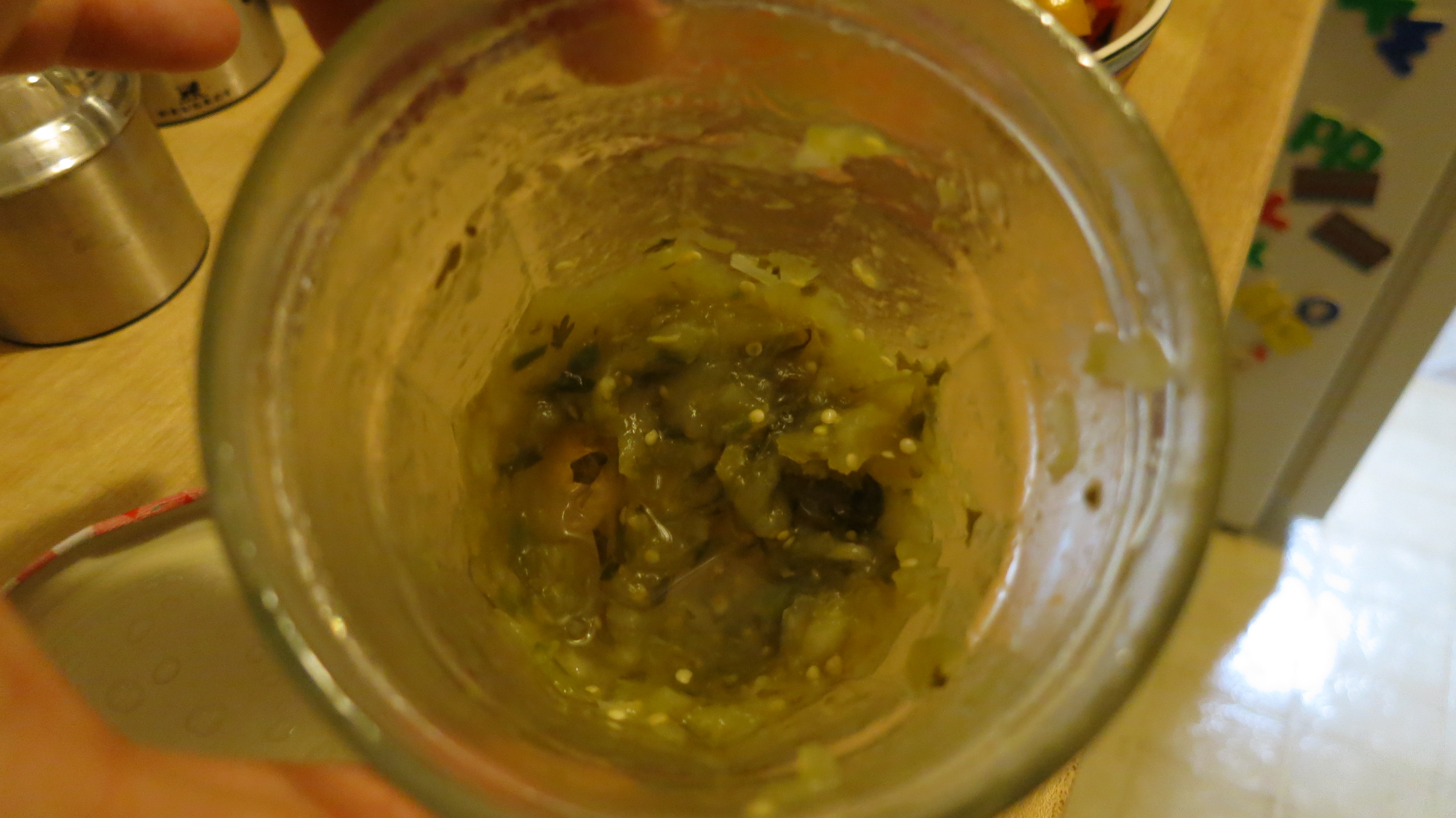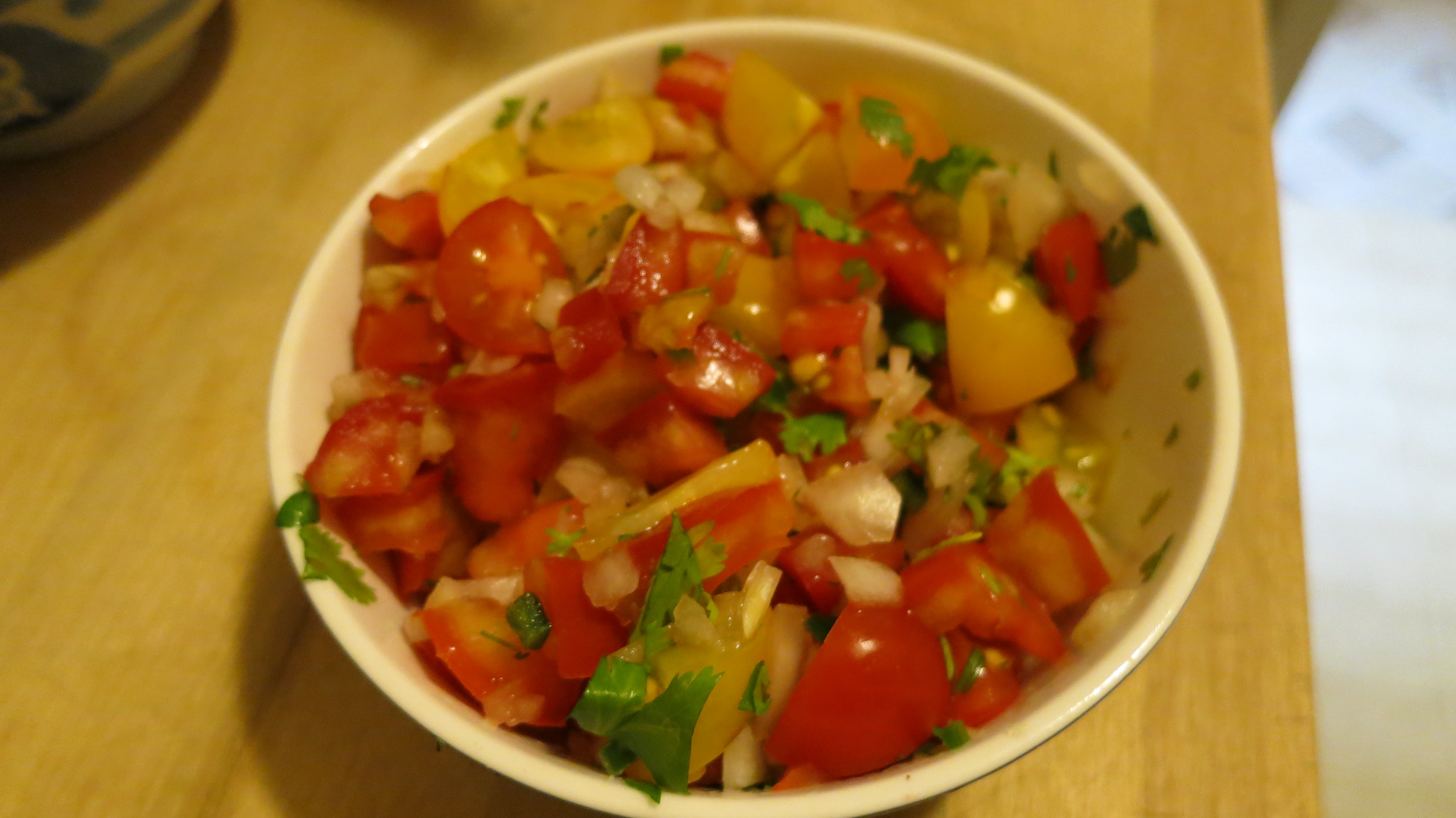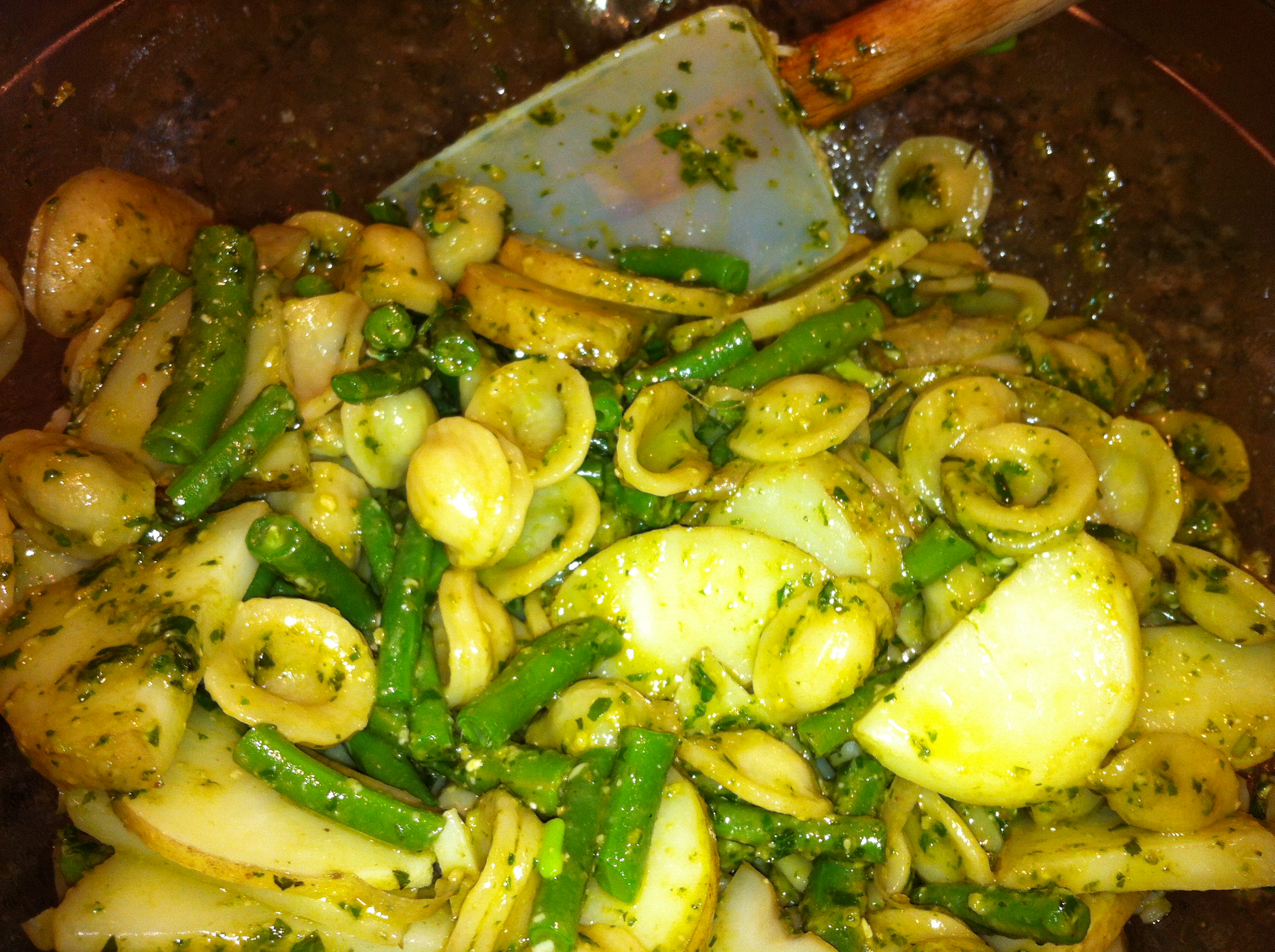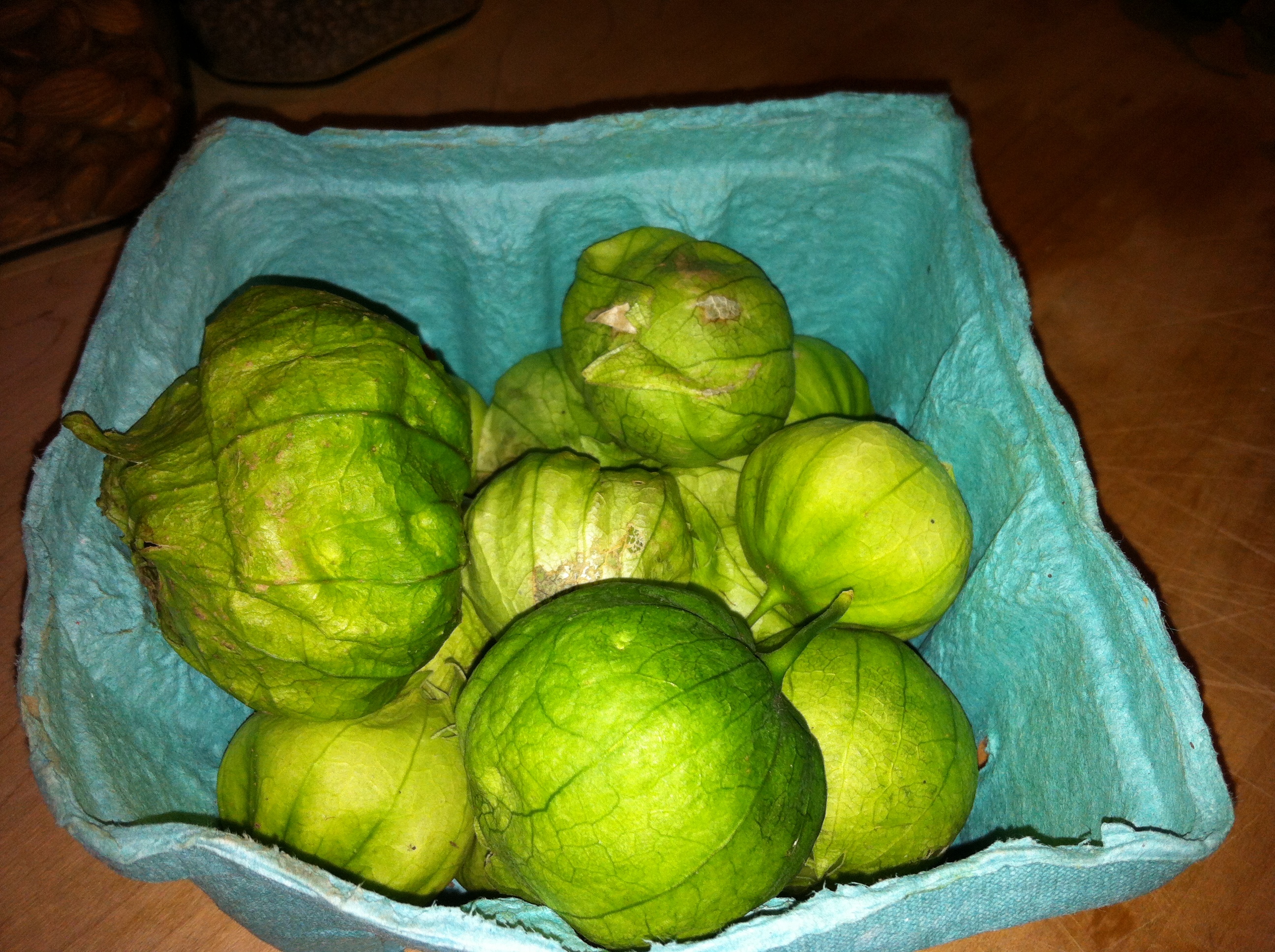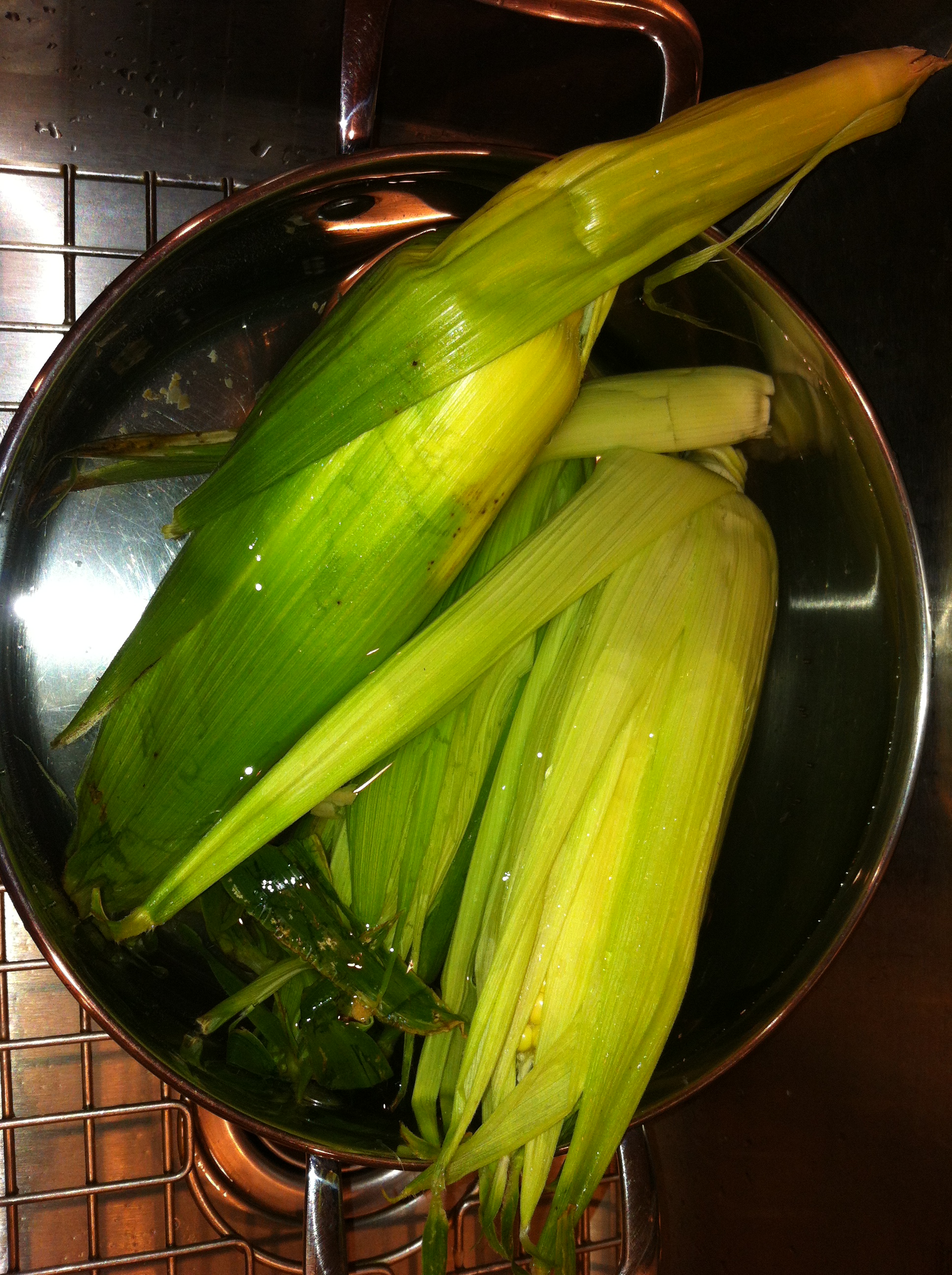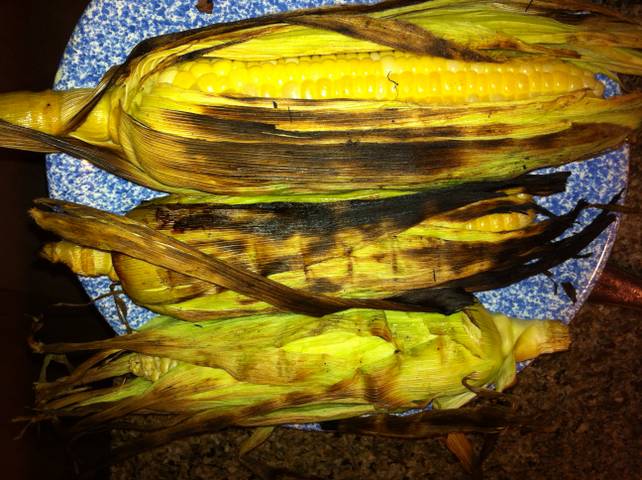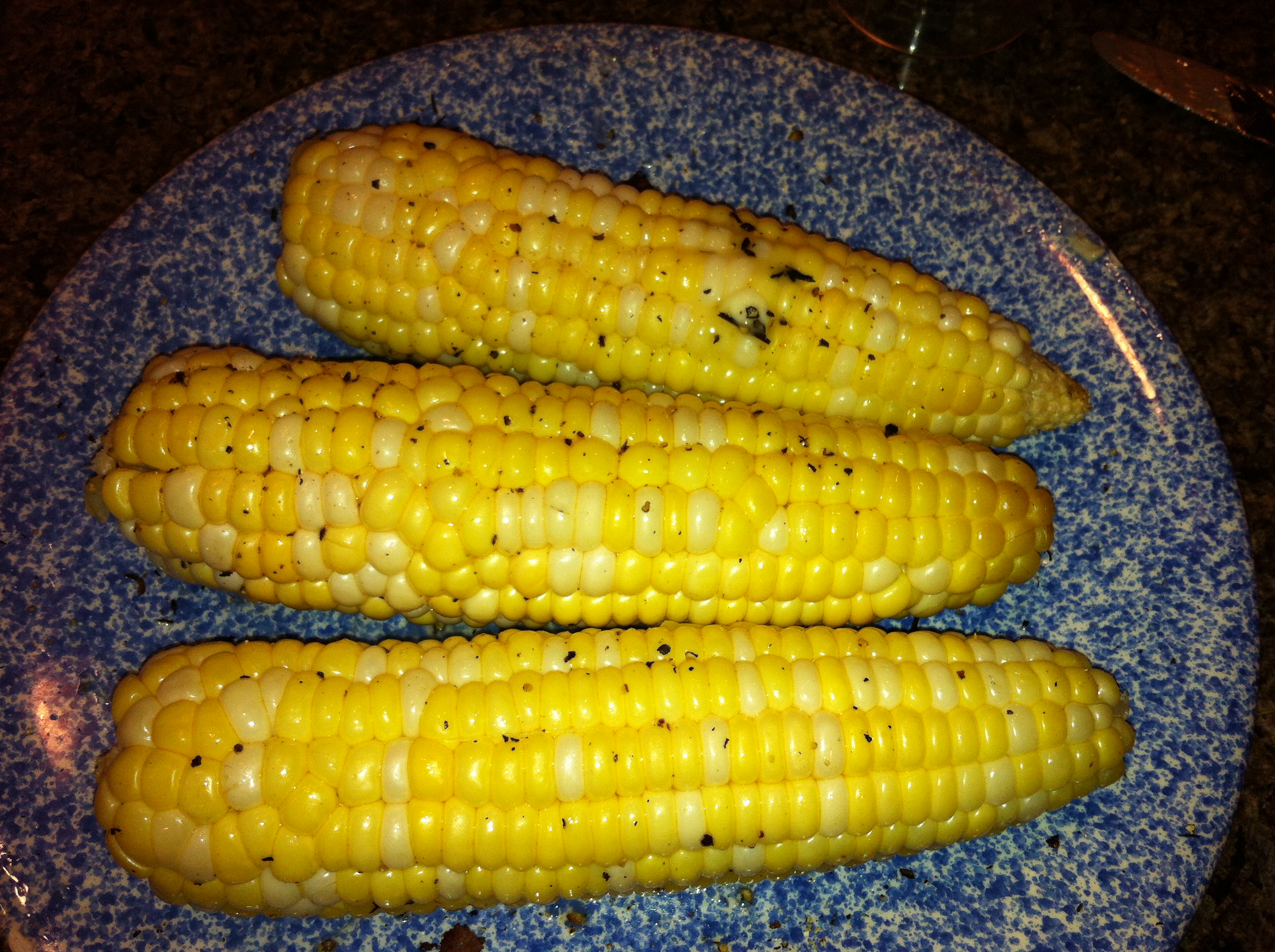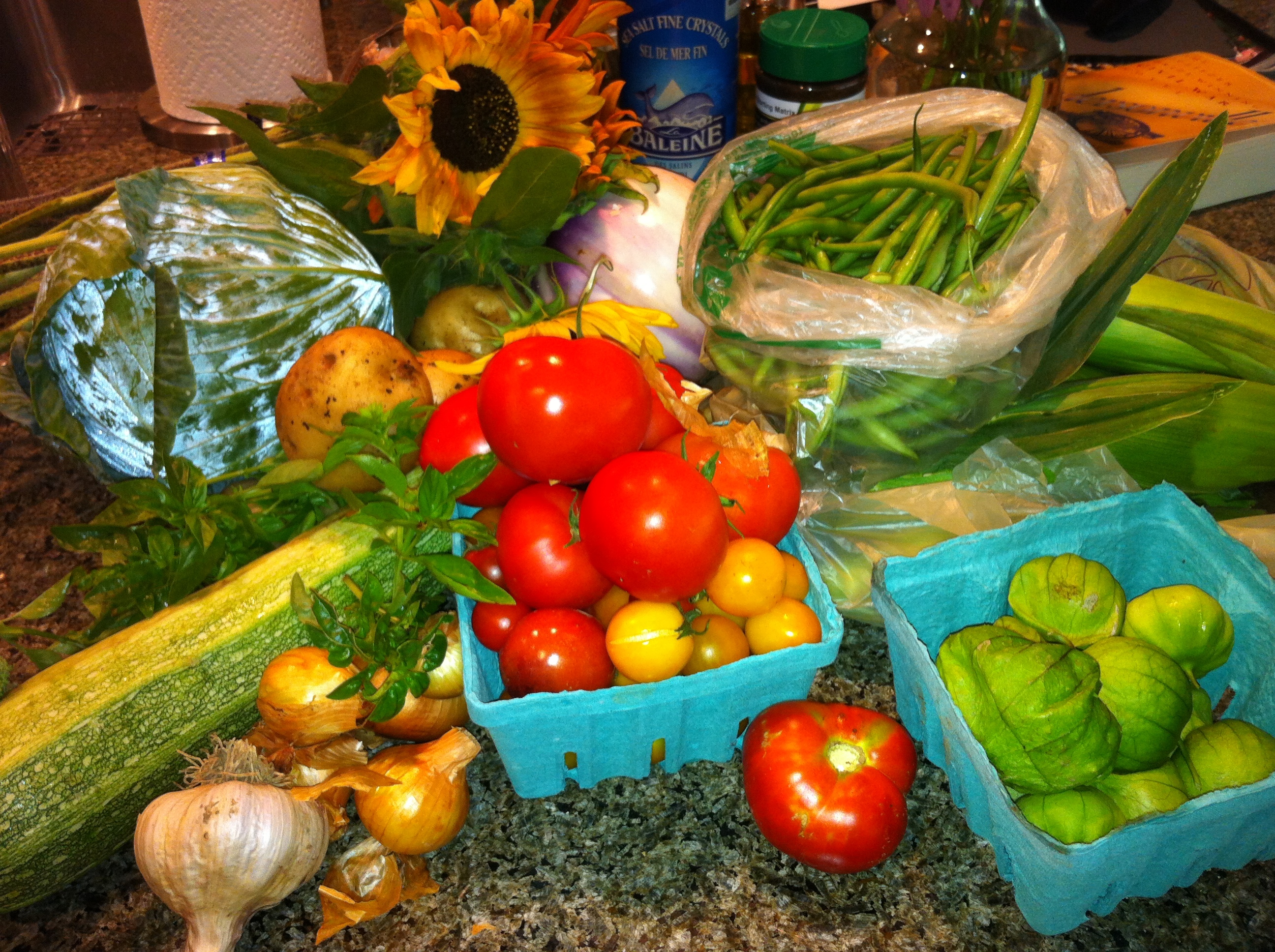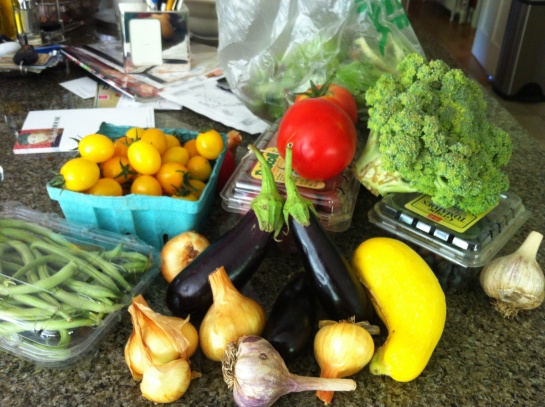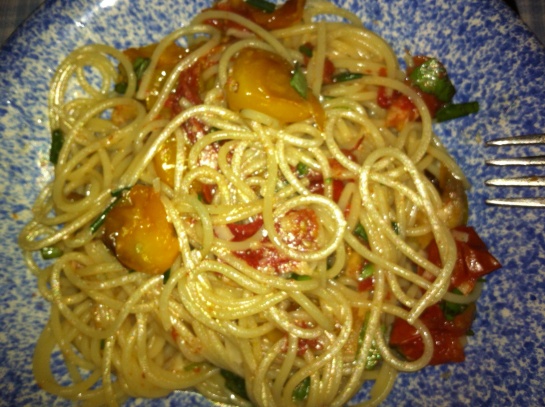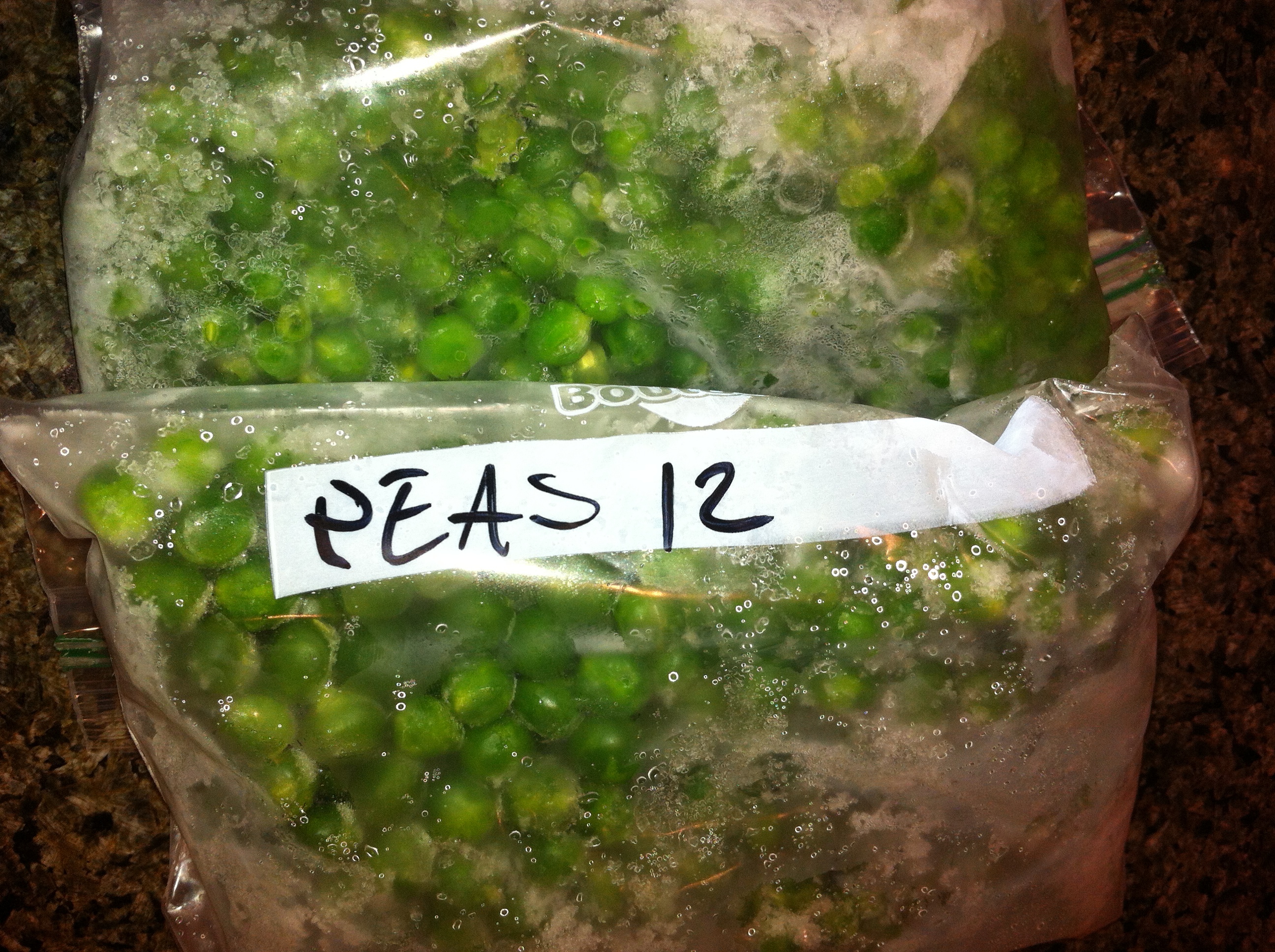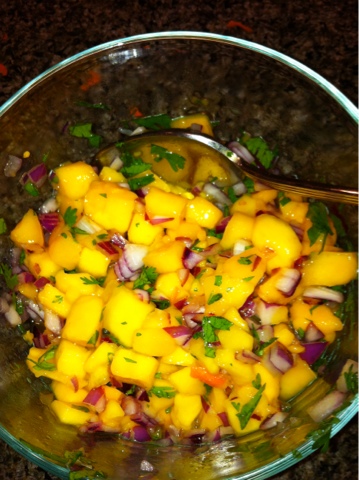So what happened to the tomatillos? As many folks suggested, I prepared salsa verde, and was pleasantly surprised at how easy it was and downright tasty. No fear factor anymore, my little green friends. The technique I had seen down in Mexico was more complex, using a comal, and probably more authentic, too, but the end result of this recipe was delicious. I boiled the whole tomatillos, then used the hand blender to blend them with white onion, cilantro and jalapeno. No need to marginalize this because of its simplicity – it definitely worked.
Looking to get a head start on things, I made the salsa verde Monday night in prep for Wednesday’s night menu inspired by Novagirl’s comment on shrimp tacos. Sad to say, the salsa verde has virtually disappeared by Wednesday afternoon. Uh-oh. I foolishly gave away 1/2 the batch thinking that it would never be consumed, but underestimated the addictive nature of salsa verde and tortilla chips.
I am such a fan of salsa verde now that I would even outright purchase tomatillos to make it again. Yum. So, I also prepared Pico de Gallo to make up for the salsa verde shortage. I chopped and seeded 2 small tomatoes, chopped 1/4 of a medium-sized white onion, 1/2 jalapeno pepper and a few sprigs of cilantro. Mixed them altogether and listo, fresh Pico de Gallo. Since I had done such an expert job of seeding the tomatoes, the salsa turned out a little dry, so I added a handful of chopped cherry tomatoes that I had on hand from my CSA pick-up. They worked like a charm and added some interesting, if nontraditional, color.
What to drink tonight? Beer would be an obvious choice, but I was thinking of a glass of wine. This dish is a tough one because it has a lot going on, particularly the heat from the jalapenos in both salsas. I thought about the bottle of J Vineyards Russian River Valley Pinot Gris that I had chilled in the fridge. I decided to do some research before risking it and opening this bottle I’ve been saving for a year. I was thrilled to find a reco from Snooth.com for Oregon Pinot Gris (close enough!), suggesting medium-bodied, fruity whites. A rose’ would work, too, or Torrontes from Argentina. I like Snooth’s tag line: Drink Better Wines.
I stumbled upon a similar taco recipe from Food & Wine for Shrimp tacos with Pickled Red Onion Salad in a post on Blog Your Own Wine. I’ll have to try that at some point, too.
In the meantime, off to pull all this together into dinner. Stay tuned, Novagirl!

